Ah, the nerdy joys of living in the 21st century! Chris Hadfield, an astronaut on board the International Space Station and William Shatner, who portrayed someone in space, were able to talk to each other live. After Captain Kirk opened hailing frequencies, Hadfield replied — using some Star Trek sound effects. Needless to say, when science fiction and reality collide like this, it is an epic day in nerdom.
Space Generations: Gene Cernan Talks with ISS Crew
It was a feel-good moment in NASA’s Mission Control in Houston: Apollo astronaut Gene Cernan dialed up the International Space Station crew to chat. There was banter back and forth about how Cernan was part of the generation that inspired the current ISS crew, and how the ISS crews are inspiring the next generation.
“You are now the shoulders for the kids to stand upon,” Cernan told ISS commander Kevin Ford. Cernan, who has expressed dismay at NASA’s current path, said he was mightily impressed with what the ISS crews are doing. “I’m envious,” he said. “I wish I could be up there with you. You guys are doing one heckuva great job. You have a big legacy to build upon and from where you leave off we’re gonna get these kids down here excited about pressing on and going even further… I’m personally proud.”
Another Amazing Earth View: The Andes Under a Blue Pacific Fog
View of the Andes from the ISS on Feb. 4, 2013 (NASA)
Even though he’s a busy guy, Expedition 34 astronaut Chris Hadfield still takes the time to share some of his amazing views from orbit aboard the ISS. One of his most recent photos is this stunning view of Andean ridges rising up from a blue haze of Pacific fog, the arc of Earth’s horizon in the distance. Gorgeous! (Edit: according to a labeled image by Peter Caltner, this is looking southeast into northern Argentina – no Pacific in view. So the haze is coming from the valley, not the ocean.)
Shared on Twitter at 6:25 p.m. EST, this has quickly become one of Hadfield’s more popular images — and for good reason. In fact sometimes it’s hard to keep up with this high-flying Canadian, who easily posts half a dozen or more photos from all across the world every day on Twitter, Facebook, and his Google+ profile (which is managed by his son Evan.) But since the ISS goes around the globe 16 times a day, there’s certainly no shortage of sights for Chris and the Exp. 34 crew!
Check out a few more of Chris Hadfield’s recent photos below:
The Mississippi delta deposits “the soil of America’s heartland” into the Gulf of Mexico (NASA)
“It’s a bird, it’s a plane… it’s a river in South America!” tweeted Hadfield. (Actually it’s looking west along the Rio São Francisco river in Brazil.) NASA
Chesapeake Bay from orbit. “You can even see the causeway,” Hadfield noted. (NASA)
On Feb. 2, Hadfield took this photo of storm clouds over Africa. “My breath was taken away,” he wrote. (NASA)
Toronto on the shore of Lake Ontario, “Canada’s most populous city” (NASA)
Want to see more of Chris Hadfield’s images from orbit? Follow him on Twitter and Facebook and over on Google+. (Just don’t be surprised if you find yourself changing your desktop background a lot more often!)
And for even more space adventures, tune in to the CSA website on February 7 at 10:30 a.m. EST when Col. Hadfield will have a live chat with William Shatner, building upon their brief (but immensely popular) impromptu web conversation from last month. He’ll also be taking questions from “space tweeps” on-site at CSA.
New ISS Timelapse: Night to Day to Night Again
Here’s the latest video shot from the International Space Station, courtesy of the crew of Expedition 34. You’ll see the view from above as the ISS crosses the terminator from night into day, and then slips back into night again. This day/night cycle happens 16 times in orbit during a 24 period. This sped-up view shows two complete orbits on January 3, 2013 from 11:43:46 to 15:49:31 GMT, and includes a couple of cameo appearances from a rising Moon.
While the beauty of Earth is indisputable, the magnificence of the space station is readily apparent here, as the solar arrays glow with the setting sunlight, even as Earth below is plunged into darkness.
Let’s hope we can one day all experience this view first-hand!
See more info about the video — and others — at the NASA Crew Earth Observations website.
NASA: Reaches for New Heights – Greatest Hits Video
Video Caption: At NASA, we’ve been a little busy: landing on Mars, developing new human spacecraft, going to the space station, working with commercial partners, observing the Earth and the Sun, exploring our solar system and understanding our universe. And that’s not even everything.Credit: NASA
Check out this cool action packed video titled “NASA: Reaching for New Heights” – to see NASA’s ‘Greatest Hits’ from the past year
The 4 minute film is a compilation of NASA’s gamut of Robotic Science and Human Spaceflight achievements to explore and understand Planet Earth here at home and the heavens above- ranging from our Solar System and beyond to the Galaxy and the vast expanse of the Universe.
Image caption: Planets and Moons in perspective. Credit: NASA
The missions and programs featured include inspiringly beautiful imagery from : Curiosity, Landsat, Aquarius, GRACE, NuSTAR, GRAIL, Dawn at Asteroid Vesta, SDO, X-48C Amelia, Orion, SLS, Apollo, SpaceX, Sierra Nevada Dream Chaser, Boeing CST-100, Commercial Crew, Hurricane Sandy from the ISS, Robonaut and more !
And even more space exploration thrills are coming in 2013 !
Image caption: SpaceX Falcon 9 rocket blasts off on May 22, 2012 with Dragon cargo capsule from Space Launch Complex-40 at Cape Canaveral Air Force Station, Fla., on the first commercial mission to the International Space Station. The next launch is set for March 1, 2013. Credit: Ken Kremer
NASA to BEAM Up Inflatable Space Station Module

More details have emerged on NASA’s plan to add the first commercial module to the International Space Station, an inflatable room built by Bigelow Aerospace. The Bigelow Expandable Activity Module (BEAM), which is scheduled to arrive at the space station in 2015 for a two-year technology demonstration. It will be delivered by another commercial company, SpaceX, on what is planned to be the eighth cargo resupply mission too the ISS for Dragon and the Falcon 9 rocket. Astronauts will use the station’s robotic arm to install the module on the aft port of the Tranquility node. NASA Deputy Administrator Lori Garver announced Wednesday NASA has awarded a $17.8 million contract to Bigelow Aerospace for BEAM.
“Today we’re demonstrating progress on a technology that will advance important long-duration human spaceflight goals,” Garver said. “NASA’s partnership with Bigelow opens a new chapter in our continuing work to bring the innovation of industry to space, heralding cutting-edge technology that can allow humans to thrive in space safely and affordably.”
BEAM is a cylindrical module, like all other ISS modules, and is about somewhat similar in size to the US Harmony module, as BEAM is about 4 meters (13 feet) long and 3.2 meters (10.5 feet) wide; Harmony 7.2 meters (24 ft) in length, and it has a diameter of 4.4 meters (14 ft). But weight is where the two vastly differ: Harmony weighs in 14,288 kilograms (31,500 lb), while BEAM weighs roughly 1,360 kg (3,000 pounds). And that is the big advantage of inflatable structures for use in space: their mass and volume are relatively small when launched, reducing launch costs.
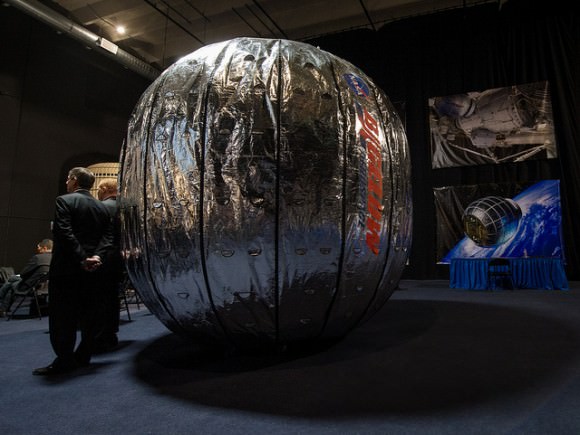
Leonard David reports on Space.com that the BEAM module should be much quieter than the other modules due to the non-metallic nature of the structure.
Read: Sounds of the Space Station
After the module is berthed to the Tranquility node, the station crew will activate a pressurization system to expand the structure to its full size using air stored within the packed module.
During the two-year test period, station crew members and ground-based engineers will gather performance data on the module, including its structural integrity and leak rate. An assortment of instruments embedded within module also will provide important insights on its response to the space environment. This includes radiation and temperature changes compared with traditional aluminum modules.
BEAM will also be assessed for future habitats for long-duration space missions, said Bill Gerstenmaier, associate administrator for human exploration and operations at NASA.
Watch how the BEAM module will be attached and inflated:
Astronauts periodically will enter the module to gather performance data and perform inspections. Following the test period, the module will be jettisoned from the station, and will burn up on re-entry.
Bigelow Aerospace says the BEAM 330 module can function as an independent space station, or several of the inflatable habitats can be connected together in a modular fashion to create an even larger and more capable orbital space complex.
Bigelow also lists their radiation shielding as equivalent to or better than the other modules on the International Space Station and substantially reduces the dangerous impact of secondary radiation, while their innovative Micrometeorite and Orbital Debris Shield “provides protection superior to that of the traditional ‘aluminum can’ designs, according to the Bigelow Aerospace website.
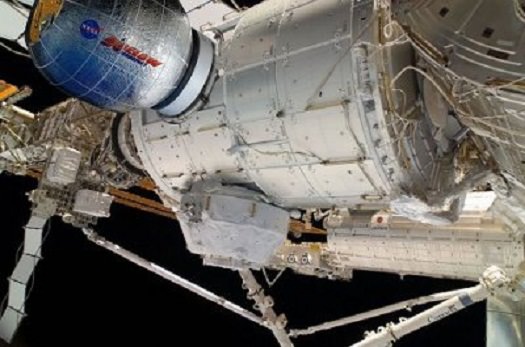

Source SPACE.com.
Sounds of the Space Station
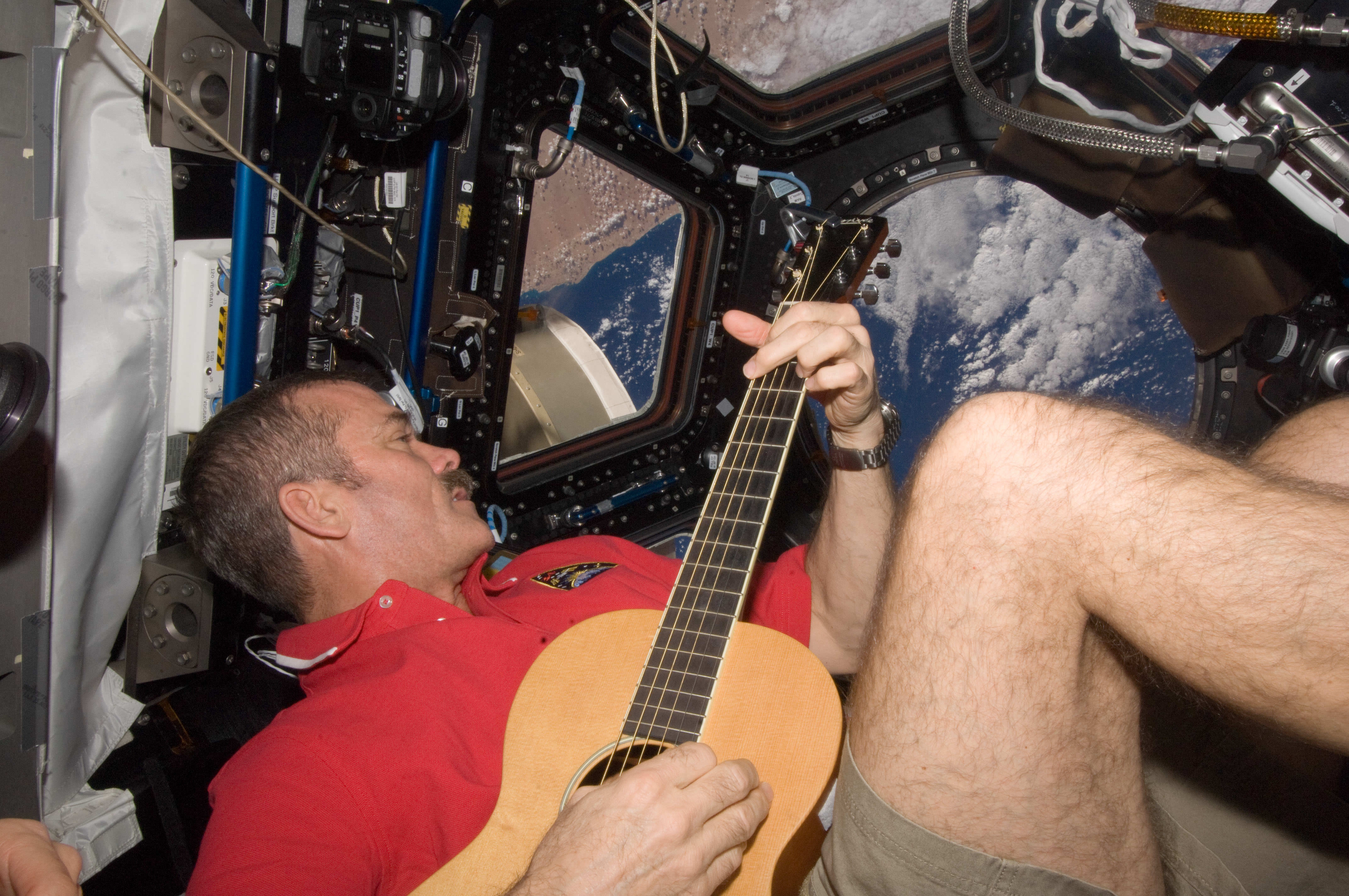
CSA astronaut Chris Hadfield strums some chords in the cupola (NASA)
You’ve probably seen plenty of photos of astronauts and cosmonauts working aboard the International Space Station, and maybe even some videos of ISS briefings and interviews and tours throughout the different modules (and perhaps even an astronaut-produced song or two.) But have you ever wondered what the average, everyday sounds inside Station are like?
If so, Canadian astronaut and Expedition 34 flight engineer Chris Hadfield has an earful for you.
To share his ISS experience past mere pixels, Hadfield has posted some recordings on Soundcloud taken from various locations around Station, giving an idea of the many ambient noises found inside humanity’s orbiting “place in space.” (But if you think it sounds anything like the bridge of the U.S.S. Enterprise, you may be in for a surprise.)
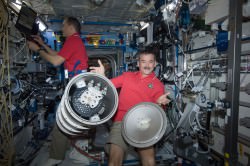 Here’s just a few of the recordings Hadfield has posted (you’ll have to click each to play in Soundcloud):
Here’s just a few of the recordings Hadfield has posted (you’ll have to click each to play in Soundcloud):
Ambient Noise of the Space Station
And here’s one that really doesn’t sound like anything on Earth: Toilet Starting on Station
So even though life on the ISS might not sound like what you’d first imagine in a spaceship or have a dramatic score to accompany its soaring adventures around the world, it certainly has a unique sound all its own (and sometimes the astronauts do get to add their own original soundtrack too.)
Chris may have founded a new music genre: “Space Folk”
Listen to more sounds of the Station on Chris Hadfield’s Soundcloud page here.
Inset image: Chris Hadfield poses with a Materials Science Laboratory Furnace Launch Support Structure (FLSS) in the Destiny laboratory of the International Space Station. NASA astronaut Tom Marshburn, flight engineer, uses a computer in the background.
Space Station Gets a New Telescope
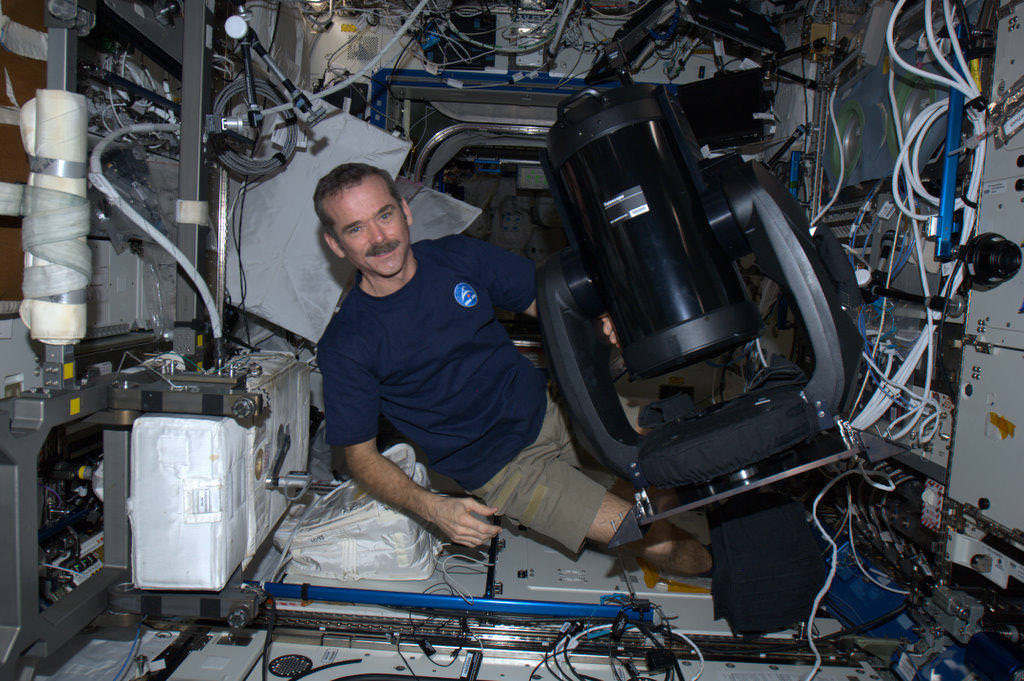
Astronauts on the International Space Station today are installing a new modified Celestron telescope. This won’t be used to observe the stars, but instead look back to Earth to acquire imagery of specific areas of the world for disaster analysis and environmental studies. Called ISERV (International Space Station SERVIR Environmental Research and Visualization System), it is a new remote-controlled imaging system.
“Essentially, it will be pointed out of one of the windows of the Space Station, and used for Earth imaging,” Andrea Tabor, social media coordinator for Celestron told Universe Today, “especially for natural disasters and to help countries that may not have their own Earth-observing satellites to help assess damage and assist with evacuations.”
ISERV will be installed in the Window Observational Research Facility (WORF) in the station’s Destiny laboratory.
The Celestron CPC 925, is a 9.25″ diffraction limited Schmidt-Cassegrain telescope and off-the-shelf sells for $2,500 including the mount, (just the 9.25 inch optical tube sells for $1,479). It was modified at the Marshall Space Flight Center.
“They used the fork mount that comes with it,” Tabor said, “but they just removed the tripod and replaced it with a specialized mount to anchor and stabilize it on the ISS.”
Because it is pointed out of a window and because the ISS is moving so fast, it would be difficult to align it with the sky and do any celestial imaging, Tabor said.
ISERV is the first of what is hoped to be a series of space station Earth-observing instruments, each to feature progressively more capable sensors to help scientists gain operational experience and expertise, as well as help design better systems in the future. Scientists envision that future sensors could be mounted on the exterior of the station for a clearer, wider view of Earth.
It arrived on the ISS in July of 2012 on board the Japanese HTV-3.
“It’s been up there sitting in a box, so today was unboxing and assembly day,” Tabor said. She added that they hope to post some of the first images from the telescope on their Twitter and Facebook pages.
The telescope will normally be operated by remote-controlled from Earth and so the astronauts won’t likely be working with it directly except for assessing its operation or troubleshooting any problems.
“Images captured from ISERV on the ISS could provide valuable information back here on Earth,” said Dan Irwin, SERVIR program director at Marshall. “We hope it will provide new data and information from space related to natural disasters, environmental crises and the increased effects of climate variability on human populations.”
Private Test Pilots to Fly 1st Commercial Crewed Space Flights for NASA
[/caption]
Image Caption: Dream Chaser commercial crew vehicle built by Sierra Nevada Corp docks at ISS
Commercial test pilots, not NASA astronauts, will fly the first crewed missions that NASA hopes will at last restore America’s capability to blast humans to Earth orbit from American soil – perhaps as early as 2015 – which was totally lost following the forced shuttle shutdown.
At a news briefing this week, NASA managers at the Kennedy Space Center (KSC) said the agency is implementing a new way of doing business in human spaceflight and purposely wants private companies to assume the flight risk first with their crews before exposing NASA crews as a revolutionary new flight requirement. Both NASA and the companies strongly emphasized that there will be no shortcuts to flying safe.
A trio of American aerospace firms – Boeing, SpaceX and Sierra Nevada Corp – are leading the charge to develop and launch the new commercially built human-rated spacecraft that will launch Americans to LEO atop American rockets from American bases.
The goal is to ensure the nation has safe, reliable and affordable crew transportation systems for low-Earth orbit (LEO) and International Space Station (ISS) missions around the middle of this decade.
The test launch schedule hinges completely on scarce Federal dollars from NASA for which there is no guarantee in the current tough fiscal environment.
The three companies are working with NASA in a public-private partnership using a combination of NASA seed money and company funds. Each company was awarded contracts under NASA’s Commercial Crew Integrated Capability Initiative, or CCiCap, program, the third in a series of contracts aimed at kick starting the development of the so-called private sector ‘space taxis’ to fly astronauts to and from the ISS.
Caption: Boeing CST-100 crew vehicle docks at the ISS
The combined value of NASA’s Phase 1 CCiCap contracts is about $1.1 Billion and runs through March 2014 said Ed Mango, NASA’s Commercial Crew Program manager. Phase 2 contract awards will follow and eventually lead to the actual flight units after a down selection to one or more of the companies, depending on NASA’s approved budget.
Since the premature retirement of NASA’s shuttle fleet in 2011, US astronauts have been 100% reliant on the Russians to hitch a ride to the ISS – at a price tag of over $60 Million per seat. This is taking place while American aerospace workers sit on the unemployment line and American expertise and billions of dollars of hi-tech space hardware rots away or sits idly by with each passing day.
Boeing, SpaceX and Sierra Nevada Corp seek to go where no private company has gone before – to low Earth orbit with their private sector manned spacecraft. And representatives from all three told reporters they are all eager to move forward.
All three commercial vehicles – the Boeing CST-100; SpaceX Dragon and Sierra Nevada Dream Chaser – are designed to carry a crew of up to 7 astronauts and remain docked at the ISS for more than 6 months.
“For well over a year now, since Atlantis [flew the last space shuttle mission], the United States of America no longer has the capability to launch people into space. And that’s something that we are not happy about,” said Garrett Reisman, a former space shuttle astronaut who is now the SpaceX Commercial Crew project manager leading their development effort. “We’re very proud to be part of the group that’s going to do something about that and get Americans back into space.”
Caption: Blastoff of SpaceX Cargo Dragon atop Falcon 9 from Cape Canaveral, Florida on May, 22, 2012, bound for the ISS. Credit: Ken Kremer
“We are the emotional successors to the shuttle,” said Mark Sirangelo, Sierra Nevada Corp. vice president and SNC Space Systems chairman. “Our target was to repatriate that industry back to the United States, and that’s what we’re doing.”
Sierra Nevada is developing the winged Dream Chaser, a mini-shuttle that launches atop an Atlas V rocket and lands on a runway like the shuttle. Boeing and SpaceX are building capsules that will launch atop Atlas V and Falcon 9 rockets, respectively, and then land by parachute like the Russian Soyuz capsule.
SpaceX appears to be leading the pack using a man-rated version of their Dragon capsule which has already docked twice to the ISS on critical cargo delivery missions during 2012. From the start, the SpaceX Dragon was built to meet the specification ratings requirements for a human crew.
Caption: Dragon spacecraft approaches the International Space Station on May 25, 2012 for grapple and berthing . Photo: NASA
Reisman said the first manned Dragon test flight with SpaceX test pilots could be launched in mid 2015. A flight to the ISS could take place by late 2015. Leading up to that in April 2014, SpaceX is planning to carry out an unmanned in-flight abort test to simulate and test a worst case scenario “at the worst possible moment.”
Boeing is aiming for an initial three day orbital test flight of their CST-100 capsule during 2016, said John Mulholland, the Boeing Commercial Programs Space Exploration vice president and program manager. Mulholland added that Chris Ferguson, the commander of the final shuttle flight by Atlantis, is leading the flight test effort.
Boeing has leased one of NASA’s Orbiter Processing Facility hangers (OPF-3) at KSC. Mulholland told me that Boeing will ‘cut metal’ soon. “Our first piece of flight design hardware will be delivered to KSC and OPF-3 within 5 months.”
Caption: Boeing CST-100 capsule mock-up, interior view. Credit: Ken Kremer
Sierra Nevada plans to start atmospheric drop tests of an engineering test article of the Dream Chaser from a carrier aircraft in the next few months in an autonomous mode. The test article is a full sized vehicle.
“It’s not outfitted for orbital flight; it is outfitted for atmospheric flight tests,” Sirangelo told me. “The best analogy is it’s very similar to what NASA did in the shuttle program with the Enterprise, creating a vehicle that would allow it to do significant flights whose design then would filter into the final vehicle for orbital flight.”
Now to the issue of using commercial space test pilots in place of NASA astronauts on the initial test flights.
At the briefing, Reisman stated, “We were told that because this would be part of the development and prior to final certification that we were not allowed, legally, to use NASA astronauts to be part of that test pilot crew.”
So I asked NASA’s Ed Mango, “Why are NASA astronauts not allowed on the initial commercial test flights?”
Mango replied that NASA wants to implement the model adopted by the military wherein the commercial company assumes the initial risk before handing the airplanes to the government.
“We would like them to get to a point where they’re ready to put their crew on their vehicle at their risk,” said Mango. “And so it changes the dynamic a little bit. Normally under a contract, the contractor comes forward and says he’s ready to go fly but it’s a NASA individual that’s going to sit on the rocket, so it becomes a NASA risk.
“What we did is we flipped it around under iCAP. It’s not what we’re going to do long term under phase two, but we flipped it around under iCAP and said we want to know when you’re ready to fly your crew and put your people at risk. And that then becomes something that we’re able to evaluate.”
“In the end all our partners want to fly safe. They’re not going to take any shortcuts on flying safe,” he elaborated. “All of us have the same initiative and it doesn’t matter who’s sitting on top of the vehicle. It’s a person, and that person needs to fly safely and get back home to their families. That’s the mission of all our folks and our partners – to go back home and see their family.”
Given the nations fiscal difficulties and lack of bipartisan cooperation there is no guarantee that NASA will receive the budget it needs to keep the commercial crew program on track.
Indeed, the Obama Administrations budget request for commercial crew has been repeatedly slashed by the US Congress to only half the request in the past two years. These huge funding cuts have already forced a multi-year delay in the inaugural test flights and increased the time span that the US has no choice but to pay Russia to launch US astronauts to the ISS.
“The budget is going to be an extremely challenging topic, not only for this program but for all NASA programs,” said Phil McAlister, NASA Commercial Spaceflight Development director.
NASA is pursuing a dual track approach in reviving NASA’s human spaceflight program. The much larger Orion crew capsule is simultaneously being developed to launch atop the new SLS super rocket and carry astronauts back to the Moon by 2021 and then farther into deep space to Asteroids and one day hopefully Mars.
Caption: Dream Chaser awaits launch atop Atlas V rocket
Bigelow Inflatable Module Will be Added to Space Station
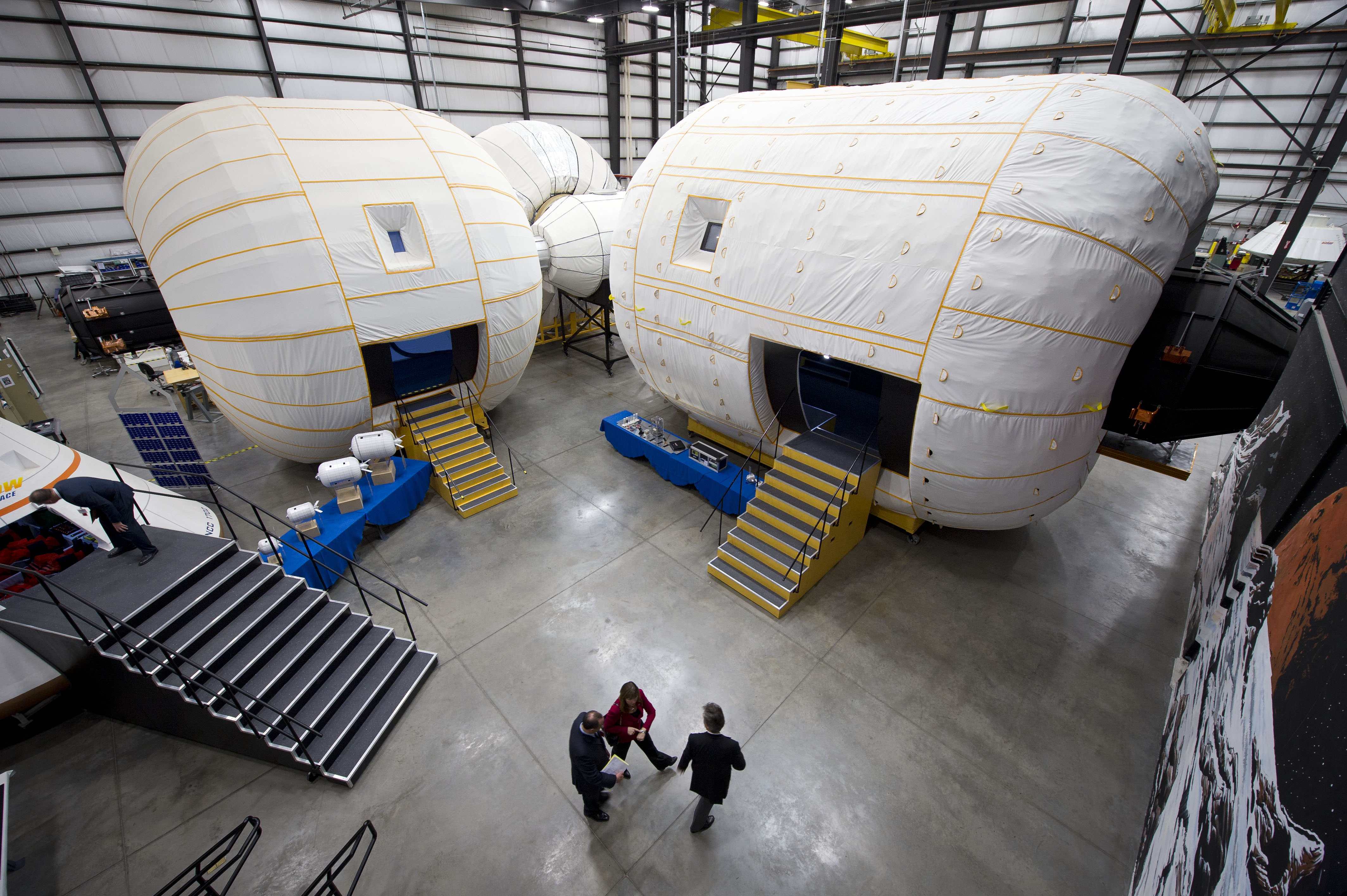
The next addition to the International Space Station will likely be an inflatable module from Bigelow Aerospace. NASA announced today they have awarded a $17.8 million contract to Bigelow to provide a new module for the ISS. “The Bigelow Expandable Activity Module will demonstrate the benefits of this space habitat technology for future exploration and commercial space endeavors,” NASA said in a press release. This would be the first privately built module to be added to the space station.
“The International Space Station is a unique laboratory that enables important discoveries that benefit humanity and vastly increase understanding of how humans can live and work in space for long periods,” NASA Deputy Administrator Lori Garver said. “This partnership agreement for the use of expandable habitats represents a step forward in cutting-edge technology that can allow humans to thrive in space safely and affordably, and heralds important progress in U.S. commercial space innovation.”
NASA will release more information about the agreement and the module next week, but previous reports have indicated the inflatable module would be used for adding additional storage and workspace, and the module would be certified to remain on-orbit for two years.
NASA has been in discussions with Bigelow for several years about using their inflatable technology.
In 2006 Bigelow launched their Genesis I inflatable test module into orbit and according to their website, it is still functioning and “continuing to produce invaluable images, videos and data for Bigelow Aerospace. It is now demonstrating the long-term viability of expandable habitat technology in an actual orbital environment.”
A second Genesis module was launched in 2007 and it, too, is still functioning in orbit.
Bigelow has said that even though the outer shell of their module is soft, as opposed to the rigid outer shell of current modules at the ISS, Bigelow’s inflatable modules are more resistant to micrometeoroid or orbital debris strikes. Bigelow uses multiple layers of Vectran, a material which is twice as strong as Kevlar. In ground tests, according to NASASpacefight.com, objects that would penetrate ISS modules only penetrated half-way through the skin of Bigelow’s modules.

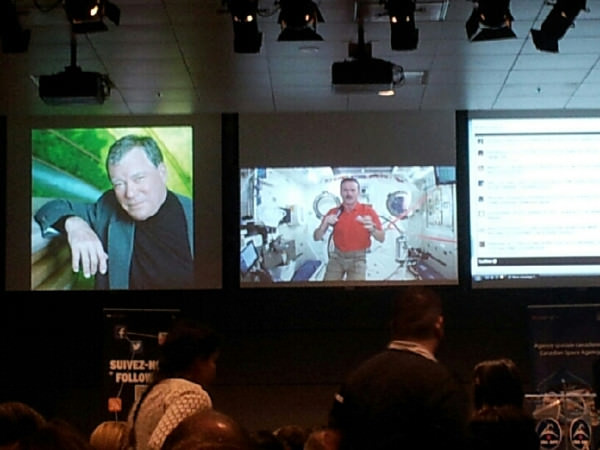
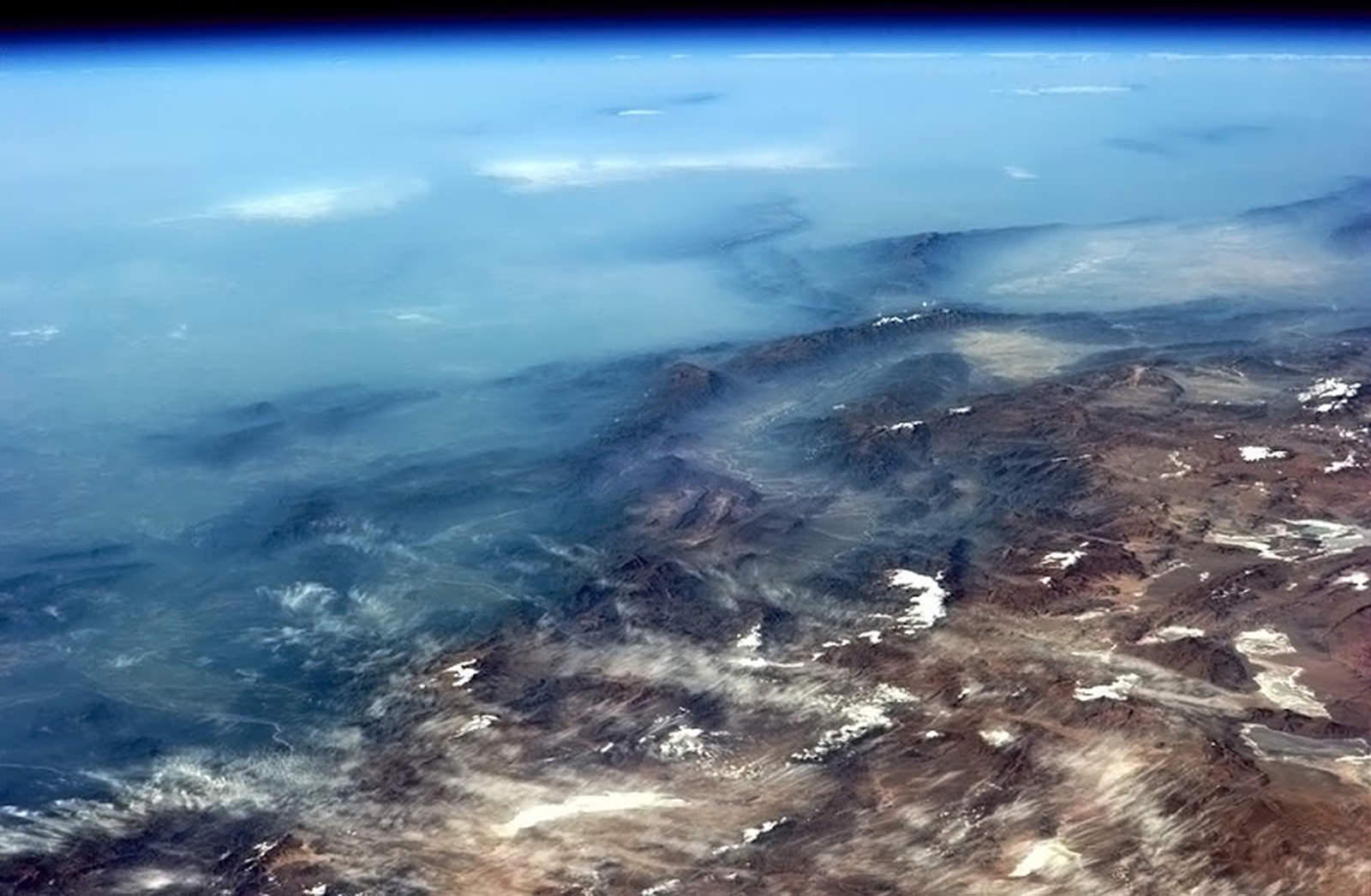



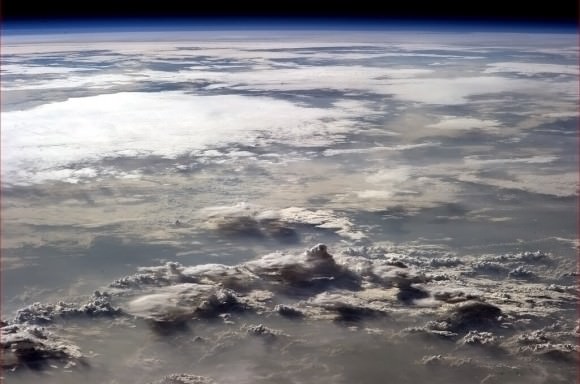

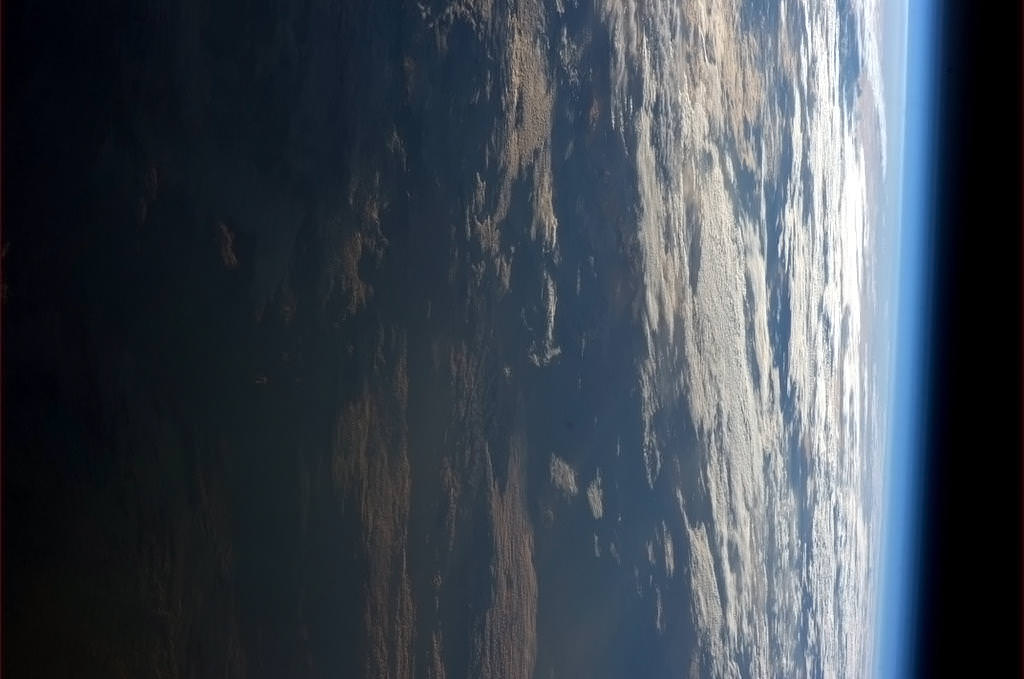
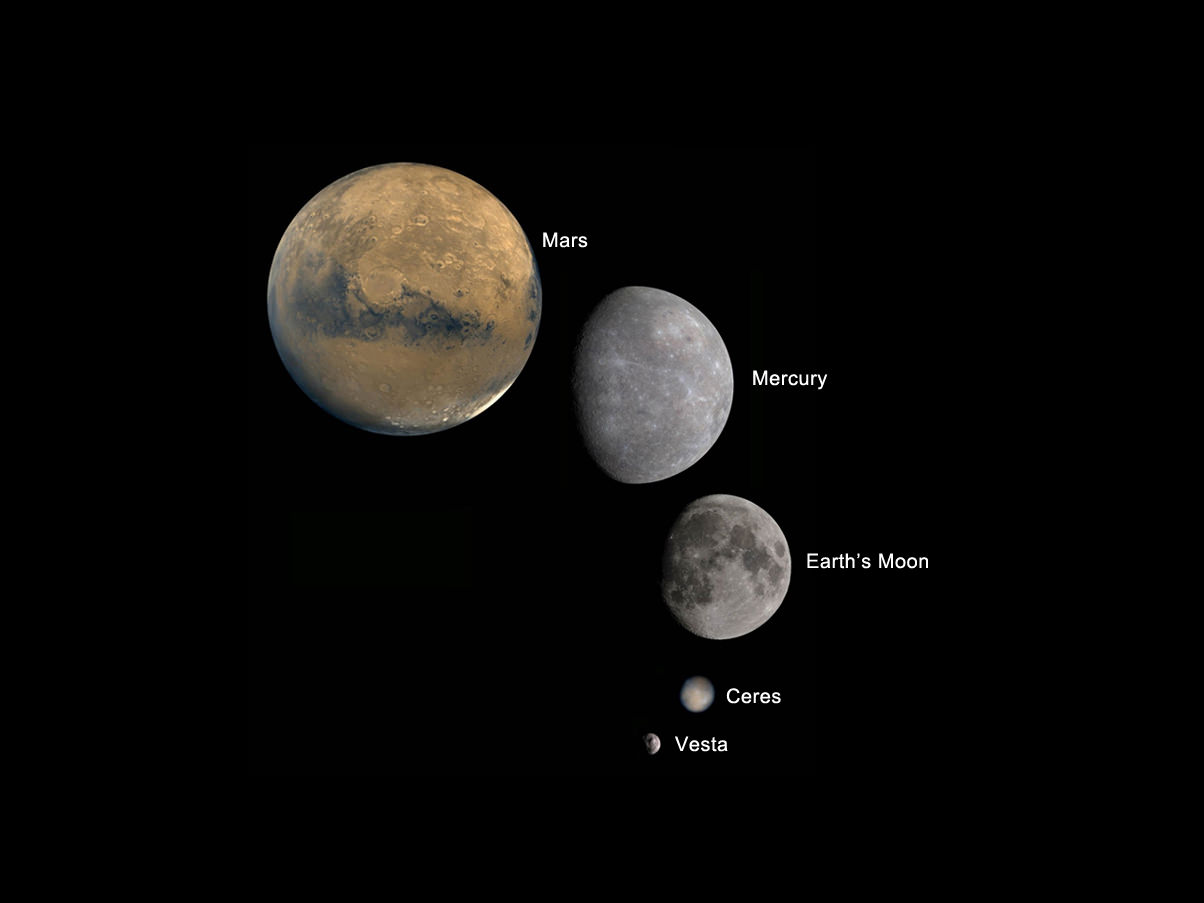


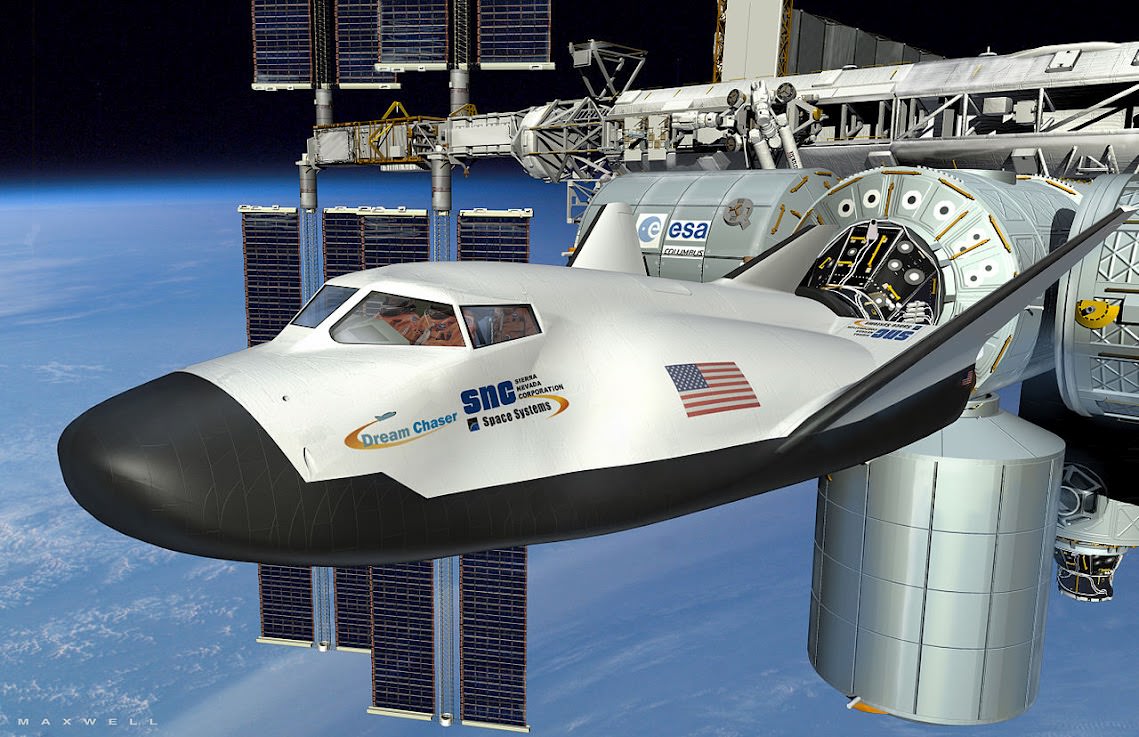
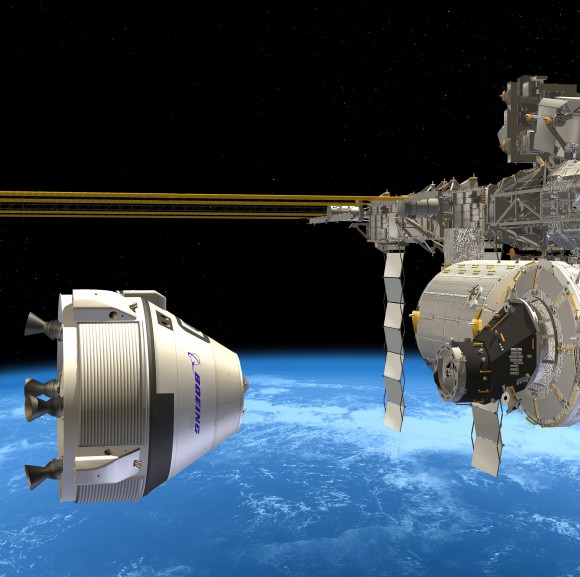
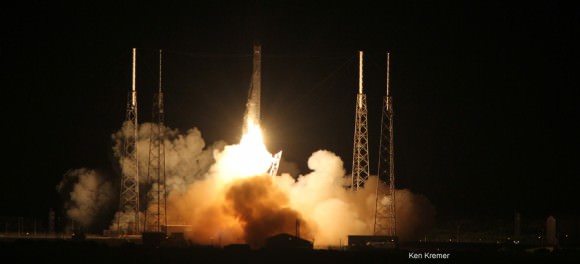
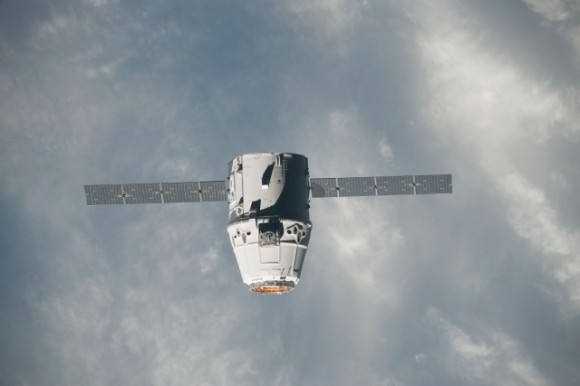
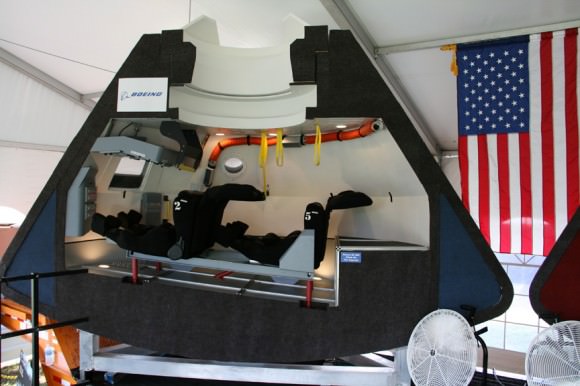
![Dream_Chaser_Atlas_V_Integrated_Launch_Configuration[1]](https://www.universetoday.com/wp-content/uploads/2013/01/Dream_Chaser_Atlas_V_Integrated_Launch_Configuration1-315x580.jpg)